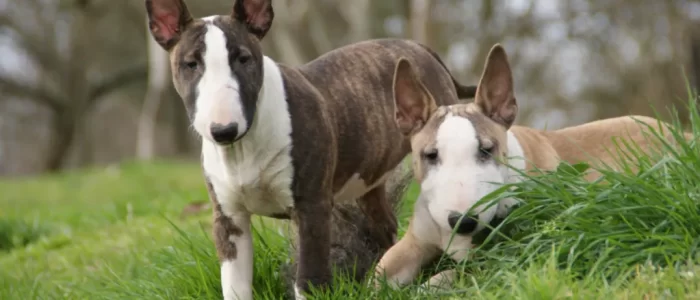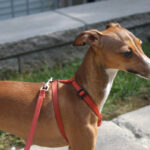Bull terriers are strong, energetic, and often stubborn dogs. While they make wonderful companions when properly trained and socialized, their tendency towards aggression can become problematic if not addressed early and consistently. As a responsible bull terrier owner, it’s important to understand the root causes of aggression in the breed and follow proven methods for curbing unwanted behaviors. In this article we talk about Managing Aggression in Bull Terriers.
Table of Contents
Understanding Aggression in Bull Terriers
Bull terriers were originally bred for bull baiting and dog fighting, pursuits that required them to be strong, determined, and willing to attack. Although these “blood sports” have been outlawed, some of the breed’s genetic predisposition towards aggression still remains. Bull terriers may display aggression towards other dogs, small animals, or even people they don’t know.
The most common causes include:
- Lack of proper socialization as a puppy
- Fear and anxiety
- Possessiveness over food, toys or other resources
- Pain or sickness
- Instinct to chase/attack moving objects
- Defense of territory against strangers
- Genetics and innate temperament
While a bull terrier may never be as gregarious as a Labrador, with consistent positive reinforcement training most can learn to moderate their aggressive reactions.
Step 1: Proper Socialization as a Puppy
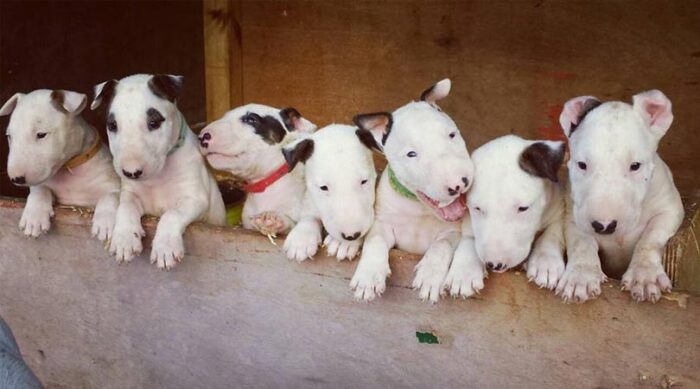
The most critical thing you can do to prevent aggression in your bull terrier is socialize them extensively as a puppy. Introduce them calmly to many different people, children, dogs, and other animals, ensuring each new meeting is a positive experience. Give them lots of rewards for good behavior. Socialization establishes tolerance and teaches them appropriate responses. A puppy kindergarten class is highly recommended. If you’ve adopted an older dog, check carefully to see what socialization they had. Additional socialization and training may be needed to curb aggressive tendencies.
Step 2: Identify Triggers
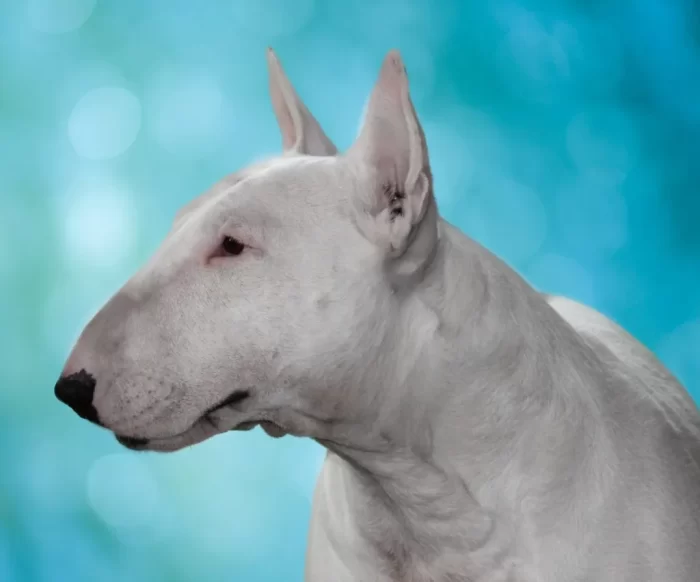
Pay close attention to your bull terrier to learn what specific situations, objects, animals or people trigger aggressive behavior. Does he always react to dogs when on leash? Does he growl when someone approaches his food bowl? Does he bark aggressively when the mailman comes? Identifying the triggers allows you to anticipate problem situations and intervene with appropriate training. Keeping a journal can help you track patterns over time. Also have any incidents checked out by a vet, as pain can cause sudden aggression.
Step 3: Use Desensitization and Counterconditioning
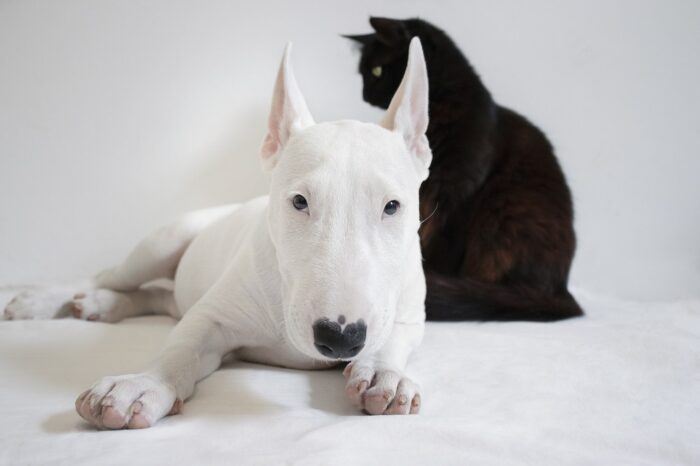
For aggression based in fear or anxiety, desensitization and counterconditioning are effective ways to gradually change your dog’s reaction by exposing them slowly to their triggers and creating a new positive association. For example, if your bull terrier is aggressive towards other dogs on leash, start by determining the distance at which he can see other dogs but remain calm and relaxed. Reward him heavily with high value treats for staying below this threshold. Very gradually decrease the distance, continuing to reward calm behavior, until your dog has learned that good things happen when other dogs appear. This process may take weeks or months based on your individual dog. Always keep sessions positive and end on a good note before frustration sets in.
Step 4: Obedience Training
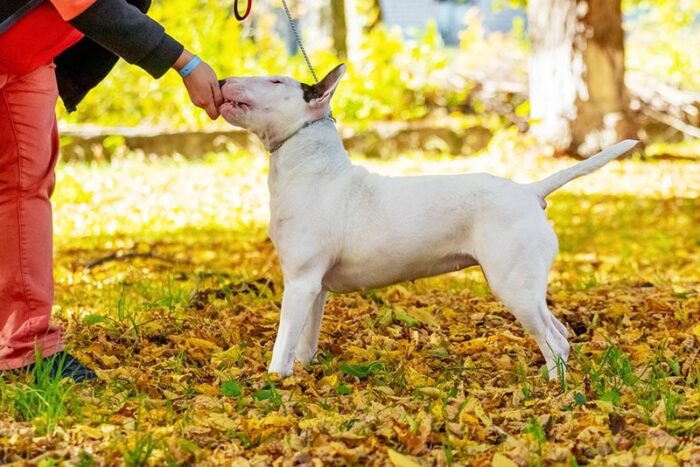
Consistent obedience training helps establish you as the leader and enhances communication between you and your bull terrier, making them more responsive in situations where aggression might occur. Work on basic cues like sit, stay, down, heel and come. Bull terriers thrive when they know their place in the family pack. Set rules and stick to them. Reward them for listening to you by stopping unwanted behaviors. Obedience classes can be very helpful, both for socialization as well as strengthening your bond.
Step 5: Redirect Aggressive Energy
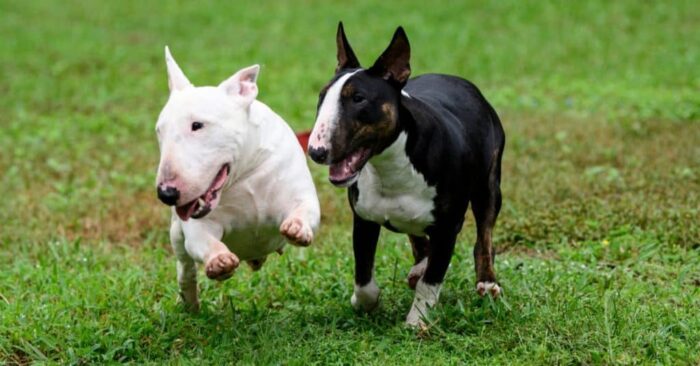
Bull terriers were bred to have an abundance of energy and a need for activity. Making sure yours gets adequate physical and mental exercise every day prevents frustration and boredom that can lead to aggression. Take long vigorous walks, play fetch, teach them tricks or take them for a swim. Puzzle toys and chew bones also provide mental stimulation and redirect energy. If you meet another dog on your walk, create enough distance so you can get your bull terrier’s attention, ask for a cue like “sit”, then reward. This refocuses them before reacting aggressively.
Step 6: Change the Association
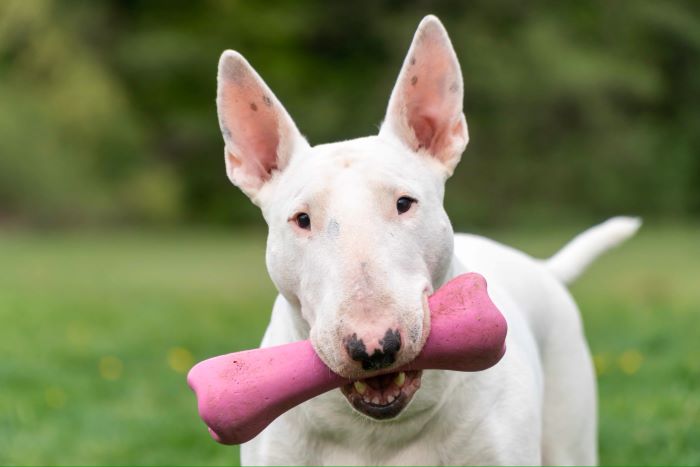
If your bull terrier is aggressive over toys, food or territory, use positive reinforcement to change the negative association. Hand feed them during meal times, asking for a simple cue before giving the food. Give them a toy then take it away, praising them and giving a treat when they relinquish without protest. Use baby gates to block access to certain rooms, then reward calm behavior when you invite them in. The more you can make them see good things come from your leadership, the less they will feel the need to guard resources.
Step 7: Consult an Expert
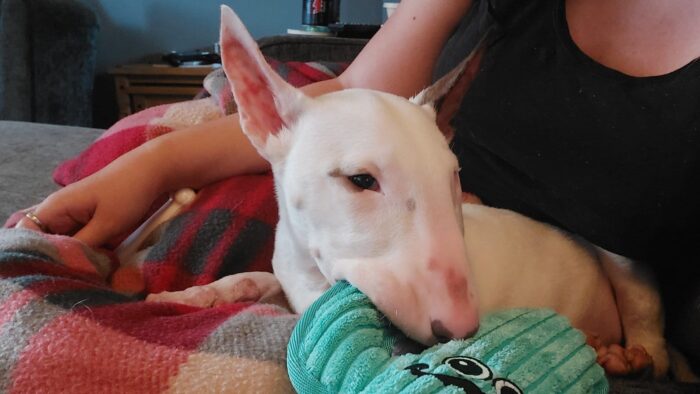
If your bull terrier displays aggression that you are struggling to control, consult an experienced dog trainer or veterinary behaviorist. They can evaluate your dog’s specific triggers and tendencies and design an individualized modification program. In some cases, anti-anxiety medication may be recommended in conjunction to help lower aggression stemming from stress and fear. They can also identify any medical issues contributing to the problems. Be sure to choose an expert well-versed in bull terrier behaviors.
With time, consistency and positive methods, the majority of bull terriers can overcome innate tendencies towards aggression. While terriers are known to have stubborn streaks, they also aim to please their owners. Establishing rules and rewarding good behavior from the start will make the process easier. Stick with the plan and you’ll end up with a happy, socially-adjusted companion. Just remember – a tired terrier is a good terrier. I sincerely hope you find this “Managing Aggression in Bull Terriers-A Step-by-Step Guide” article helpful.
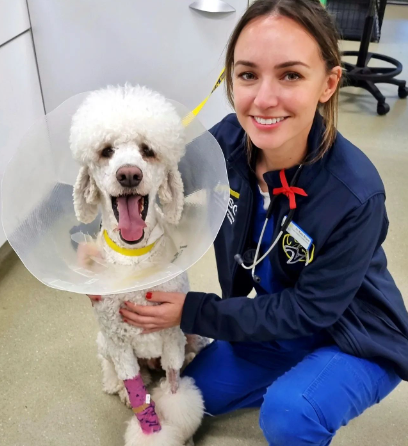
Dr. Kate Bruce is a highly experienced veterinarian with a Master’s degree in Veterinary Medicine and over a decade of expertise in animal behavior and holistic pet care. She combines traditional and modern practices to offer exceptional advice on pet health and wellness. Explore more at petsconsultancy.com and follow her on Instagram for expert tips.

